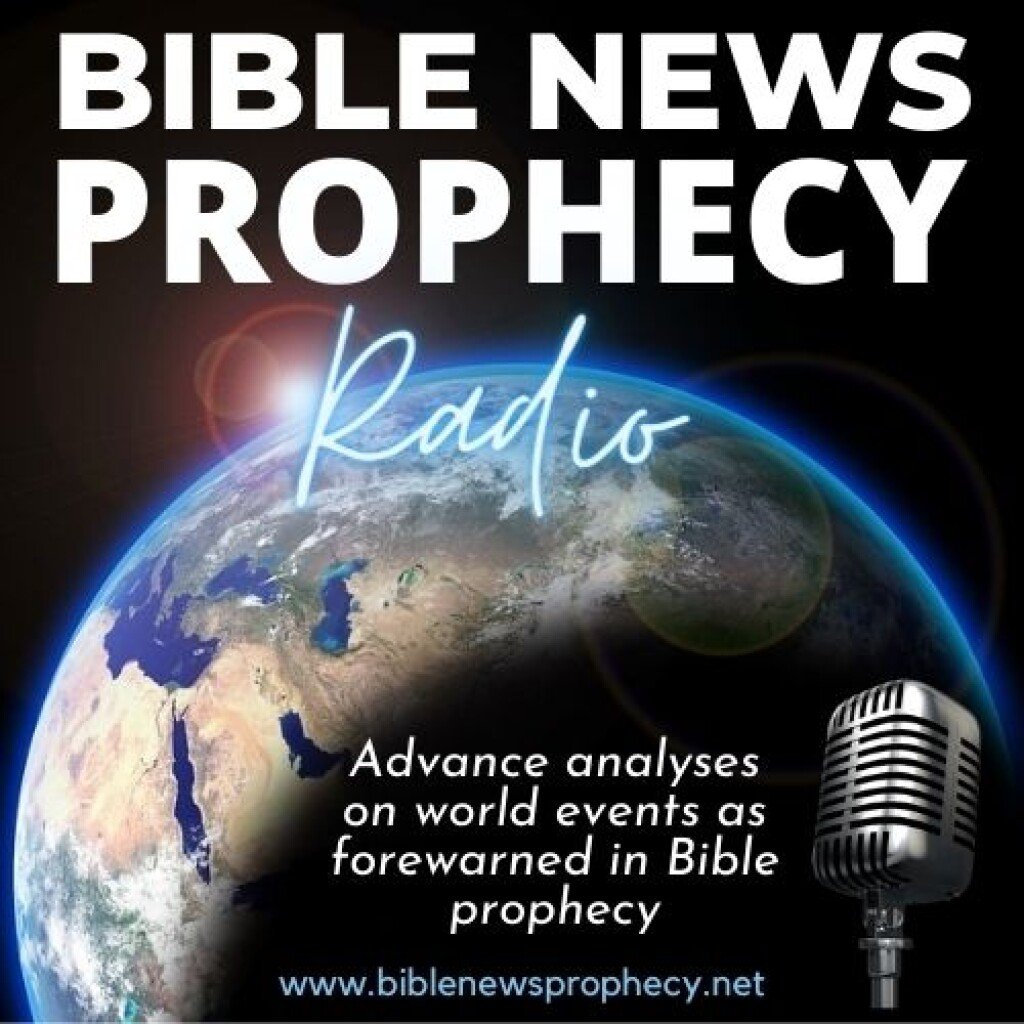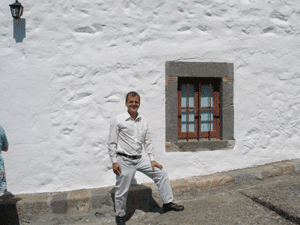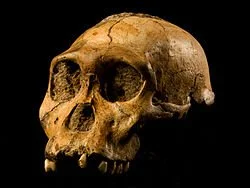Some claim that 1 John 5:7-8 is proof of the Greco-Roman trinity (and that the above diagram ‘explains’ the trinity).
But should that verse be used as proof?
Furthermore, is what some think 1 John 5:7-8 states really even supposed to be in the Bible?
The above drawing is also used by some trinitarians to explain the trinity, even though it clearly violates laws of logic. It was basically developed because although most who profess Christ claim to believe in the Greco-Roman trinity, it is a concept that is contradictory, so trying to show it in a drawing supposedly makes the illogical easier to understand.
But was the trinity a doctrine of the New Testament or early Christians?
Here is what one modern historian wrote about it:
Like other doctrines that became central to the faith, however, belief in the Trinity was a historical development, not a “given” from the early years of the faith. A. The basic notion of the Trinity is that there are three persons in the Godhead: Father, Son, and Holy Spirit. These are all equally God and of the same substance, but despite the fact there are three persons, together, they compromise only one God, indivisible in nature. B. This doctrine does not appear to be a doctrine pronounced by the historical Jesus, Paul, or any other Christian writer during the first hundred years or so of Christianity. C. It cannot be found explicitly stated in the earliest Christian writings. The only passage of the New Testament that declares the doctrine (1 John 5:7-8) was not originally part of the text but was added by doctrinally astute scribes at a later date (it is not found in any Greek manuscripts until the 11th century) (Ehrman B. From Jesus to Constantine: A History of Early Christianity, Part 2. The Teaching Company, Chantilly (VA), 2004, p. 43).
The above properly concludes that the trinity was not an original Christian belief and that the only passage in the New Testament that supposedly declares that doctrine (1 John 5:7-8) was added at a later date.
Here is the version of 1 John 5:7-8 as improperly shown in the NKJV and the modern Douay Rheims:
7 For there are three that bear witness in heaven: the Father, the Word, and the Holy Spirit; and these three are one. 8 And there are three that bear witness on earth: the Spirit, the water, and the blood; and these three agree as one. (1 John 5:7-8, NKJV)
7 And there are three who give testimony in heaven, the Father, the Word, and the Holy Ghost. And these three are one. 8 And there are three that give testimony on earth: the spirit, and the water, and the blood: and these three are one. (1 John 5:7-8, Douay-Rheims)
But much of what is shown above was ADDED to the original biblical texts.
Here is what the original text supports according to Dr. Daniel Wallace, professor of New Testament Studies at Dallas Theological Seminary (a trinitarian institution) wrote:
The Textual Problem in 1 John 5:7-8:
“5:7 For there are three that testify, 5:8 the Spirit and the water and the blood, and these three are in agreement.” –NET Bible
Notice that this is much shorter than what most Protestant or Catholic translators now show. Even certain trinitarian scholars realize that instead of teaching the trinity, the above has to do with Jesus and baptism (see Nelson Study Bible, p. 2147 which is also quoted in the article Did the True Church Ever Teach a Trinity?). It was only after someone scribbled a side note, well after the Bible was written, that the trinitarian view was added.
How late was the addition that made it longer?
Here is something from Dr. Daniel Wallace on the longer addition:
This longer reading is found only in eight late manuscripts, four of which have the words in a marginal note. Most of these manuscripts (2318, 221, and [with minor variations] 61, 88, 429, 629, 636, and 918) originate from the 16th century; the earliest manuscript, codex 221 (10th century), includes the reading in a marginal note which was added sometime after the original composition. Thus, there is no sure evidence of this reading in any Greek manuscript until the 1500s; each such reading was apparently composed after Erasmus’ Greek NT was published in 1516. Indeed, the reading appears in no Greek witness of any kind (either manuscript, patristic, or Greek translation of some other version) until AD 1215 (in a Greek translation of the Acts of the Lateran Council, a work originally written in Latin)…
The Trinitarian formula (known as the Comma Johanneum) made its way into the third edition of Erasmus’ Greek NT (1522) because of pressure from the Catholic Church. After his first edition appeared (1516), there arose such a furor over the absence of the Comma that Erasmus needed to defend himself. He argued that he did not put in the Comma because he found no Greek manuscripts that included it…
In reality, the issue is history, not heresy: How can one argue that the Comma Johanneum must go back to the original text when it did not appear until the 16th century in any Greek manuscripts? (Wallace DB. The Textual Problem in 1 John 5:7-8. http://bible.org/article/textual-problem-1-john-57-8)
Although the NIV gets I John 5:7-8 right, the KJV, Douay-Rheims, NKJV and many other translations of I John 5:7-8 include words not in the original text. On page 1918, The Ryrie Study Bible reminds everyone, related to the NKJV:
“Verse 7 should end with the word witness. The remainder of v. 7 and part of v. 8 are not in any ancient Greek manuscript…”.
In other words the words “in heaven: the Father, the Word, and the Holy Spirit; and these three are one. And there are three that bear witness on earth” are not inspired and are not supposed to be in the Bible.
Now lest any Catholics have a different view, although the CHANGED version of the Latin Vulgate contains a version of this, the Codex Amiatinus (Codex Amiatinus. Novum Testamentum Latine interpreter Hieronymo. Epistula Iohannis I V:6-8. Constantinus Tischendorf, Lipsiae. 1854 http://books.google.com/books?hl=pl&id=x0opAAAAYAAJ&q=NOVUM_TESTAMENTUM_LATINE#v=onepage&q=NOVUM_TESTAMENTUM_LATINE&f=false viewed 04/21/12), which is believed to be the closest to the original document that Jerome originally translated into Latin, also does not have this as The Catholic Encyclopedia states:
Codex Amiatinus The most celebrated manuscript of the Latin Vulgate Bible, remarkable as the best witness to the true text of St. Jerome…(Fenlon, John Francis. “Codex Amiatinus.” The Catholic Encyclopedia. Vol. 4. New York: Robert Appleton Company, 1908. 21 Apr. 2012 <http://www.newadvent.org/cathen/04081a.htm>)
Note: Yes, I personally read the Latin in the Codex Amiatinus and compared it to the changed version and more modern version of the Latin Vulgate which differs from the early version in that the modern version adds “in caelo, Pater, Verbum, et Spiritus Sanctus. Et hi tres unum sunt. Et tres sunt qui testimonium dant in terra:” (Latin Vulgate . com is provided by Mental Systems, Inc. http://www.latinvulgate.com/verse.aspx?t=1&b=23&c=5 viewed 04/21/12).
In other words, Roman Catholic scholars realize that the texts that Jerome used to originally put together the Latin Vulgate Bible (the basic Bible for Roman Catholics) did not have the late addition (which, of course, it could not originally have had as that addition came about many centuries after Jerome did his translation).
Basically, what seems to have happened is that a monk put a personal note related to his interpretation of the ‘three’ mentioned in the first part of 1 John 5:7. One or more scribal monks after him, inserted his note actually in the text. It was NOT inspired by God.
The Protestant and Greco-Roman Catholic Bibles that have the added words are relying on very late documents that were not considered to be original. Some, of course, have ignored the truth about the origin of 1 John 5:7-8 and wish to believe that because early heretics seem to have possibly referred to it (one popular online source falsely claims that Tertullian, who followed the heretic Montanus, quoted the omitted words in Against Praxeas–this is not true as I have read that writing and it is not in there–but even if it was, Tertullian was a heretic follower who did not seem to have the proper canon), that it must be true–but that of course is a lie.
Even various trinitarian scholars have concluded that 1 John 5:6-8 essentially has to do with Christ–not the “trinity” (see Nelson Study Bible, p. 2147 which is also quoted in the article Did the True Church Ever Teach a Trinity?).
Notice more of what the trinitarian Dr. Wallace has said about it:
In 1516, Desiderius Erasmus, a Dutch humanist scholar, published the first printed Greek New Testament—on March 1, 1516. When it came out, he did not have this verse, 1 John 5:7 in there, affirming the Trinity. There were Catholic scholars who got very upset with him for not putting it in there. And in his second edition of 1519, he didn’t have it. What he mentioned in his notes in that second edition is “I did not put it in because I did not see it in any Greek manuscripts.” … his third edition of 1522 now has 1 John 5:7-8 in it with that Trinitarian formula.
That is something that has plagued English readers of the Bible, but not German readers. Because Martin Luther based his New Testament on the 1519 edition that didn’t have that. So, in 1519 Luther was using that edition and it didn’t have that Trinitarian formula. German Christianity has never had a problem the Bible, never had the Trinitarian formula in 1 John 5:7-8. As stated, it made it into Erasmus’ 1522 text and then in the King James Version Bible after that. Erasmus basically puts it in under protest. … It seems that this particular reading was never part of the Greek New Testament until after there was a protest. … It never affected Christians through any of the church councils. They never pointed out that verse, because it did not exist in the Bible. So, they came up to the doctrine of the Trinity on some other basis. (Wallace D. What are Some Passages You Interpret Differently than Dr. Ehrman?, 1 John 5:7-8. YouTube video. Jan 15, 2011)
Yes, “the Trinitarian formula in 1 John 5:7-8” was not part of the true Textus Receptus. Notice that the Greco-Roman church councils did not mention it, as the addition did not exist in scripture. Understand that it is from the councils of men (influenced by Imperial authorities and others) that the trinitarian doctrine came from.
The so-called “trinitarian formula” was never part of the biblical text. Notice also the following from Dr. Bruce Metzger:
(1) The text is missing from all Greek manuscripts except eight and these contain the passage of in what appears to be a translation of the Latin Vulgate …
(2) The passage is quoted in none of the Greek Fathers, who, had they known it, would most certainly have employed it in the Trinitarian controversies (Sabellian and Arian). Its first appearance in Greek is in a Greek version of the (Latin) Acts of the Lateran Council in 1215.
(3) The passage is absent from the manuscripts of all ancient versions (Syriac, Coptic, Armenian, Ethiopic, Arabic, Slavonic), except the Latin; and it is not found (a) in the Old Latin in its early form (Tertullian Cyprian Augustine), or in the Vulgate (b) as issued by Jerome … or (c) as revised by Alcuin…
The earliest instance of the passage being quoted as a part of the actual text of the Epistle [italics added] is in a fourth century Latin treatise entitled Liber Apologeticus (chap. 4), attributed either to the Spanish heretic Priscillian (died about 385) or to his follower Bishop Instantius. (Metzger B. A Textual Commentary on the Greek New Testament, 2nd ed. Hendrickson Publishers, 2005, pp. 647-648)
Despite the facts of history, what some seem to want to do is claim that because some writers wrote statements similar to the extra words added to 1 John 5:7-8 that this proves that they were originally in the inspired manuscripts of scripture (e.g. Rogers J. Why Creeds and Confessions? Lulu.com, pp. 98-99).
Instead, if such trinitarian writings prove anything, they point to a monk of some type who read non-biblical texts (probably the late 4th century document known as the Latin Liber Apologeticus by the gnostic Priscillian) and then decided to insert a comment he read elsewhere.
The truth is that the current Protestant and Catholic Bibles, which have the added words, are relying on very late documents that were not considered to be original or faithful to the original text of the Bible. Some, of course, have ignored the truth about the origin of 1 John 5:7-8. The reality is that scholars realize that 1 John 5:7-8 additions were added centuries after the New Testament was originally written.
It is partially because of intentional errors, like including words that should not be in 1 John 5, that Muslims claim that the New Testament cannot be trusted because ‘Christians’ (so-called) changed it. The Apostle Peter warned, “there will be false teachers among you, who will secretly bring in destructive heresies … And many will follow their destructive ways, because of whom the way of truth will be blasphemed” (2 Peter 2:1-2). Certainly, that warning applies to any who intentionally changed the Bible on their own (see also Revelation 22:18-19).
According to Protestant Dr. Wallace, here is what the original Greek supports for 1 John 5:7-8:
“5:7 For there are three that testify, 5:8 the Spirit and the water and the blood, and these three are in agreement.” —NET Bible
Furthermore, other Protestant trinitarian scholars have concluded that what should be in 1 John 5:6-8 essentially has to do with baptism and Jesus—not the “trinity”:
5:6 Water and blood have been interpreted … (1) as Jesus’ baptism and death, (2) as His incarnation … Most scholars favor the first interpretation …
5;7, 8 The Holy Spirit testifies in accord with the water and the blood (v. 6) that Jesus is the Son of God (Radmacher ED, general editor. Nelson Study Bible. New King James Version, 1997, p. 2147).
Properly understood, 1 John 5 simply is not teaching the modern Greco-Roman trinity that most who profess Christ claim to believe in.
I would like to mention here that BECAUSE most Bibles contain the false long addition to 1 John 5:7-8, that Muslims often cite this as absolute proof that the Bible has been tampered with and cannot be trusted like they claim the Koran can. The belief and use of 1 John 5:7-8 causes the name of Christ (through the term ‘Christianity’) to be blasphemed among the Gentiles (Romans 2:24; Isaiah 52:5). No honest translator should have ever included it in the Bible as anything other than a footnote that it was improperly added in later centuries as a pretended addition to the text.
Origins of Certain Trinitarian Terms
The Cathecism of the Catholic Church itself admits that the Church (not the Bible) had to come up with terms of “philosophical” (pagan/Greek) origin to explain the trinity:
251 In order to articulate the dogma of the Trinity, the Church had to develop its own terminology with the help of certain notions of philosophical origin: “substance,” “person,” or “hypostasis,” “relation” and so on (Catechism of the Catholic Church. Imprimatur Potest +Joseph Cardinal Ratzinger. Doubleday, NY 1995, p. 74).
According to a Greco-Roman Catholic bishop named Marcellus of Ancyrae, around the middle of the fourth century, certain aspects of trinitarianism came from paganism and the term “hypostases” entered the professing Christian world from a heretic named Valentinus:
Now with the heresy of the Ariomaniacs, which has corrupted the Church of God…These then teach three hypostases, just as Valentinus the heresiarch first invented in the book entitled by him ‘On the Three Natures’. For he was the first to invent three hypostases and three persons of the Father, Son and Holy Spirit, and he is discovered to have filched this from Hermes and Plato (Source: Logan A. Marcellus of Ancyra (Pseudo-Anthimus), ‘On the Holy Church’: Text, Translation and Commentary. Verses 8-9. Journal of Theological Studies, NS, Volume 51, Pt. 1, April 2000, p.95 ).
So, it was a heretic that introduced the trinitarian term hypostasis.
The term “substance” basically comes from a Greek term that was introduced to the Catholic and Eastern Orthodox churches by the pagan sun-worshiping Emperor Constantine. Protestant scholar H. Brown noted:
Although Constantine is usually remembered for the steps he took toward making Christianity the established religion of the Roman Empire, it would not be wrong to consider him the one who inaugurated the centuries of trinitarian orthodoxy. It was he who proposed and perhaps even imposed the expression homoousis at the Council of Nicea in 325, and it was he who provided government aid to the orthodox and exerted government pressure against nonconformists. ( Brown HOJ. Heresies: Heresy and Orthodoxy in the History of the Church. Hendrickson Publishers, Peabody (MA), 1988)
It should be noted that it is understood, even by some Roman Catholic scholars, like Priest Bellarmino Bagatti, that those considered to be Judeao-Christians did not accept the Emperor’s non-biblical term:
The point of view of the Judaeo-Christians, devoid of Greek philosophical formation, was that of keeping steadfast to the Testimonia, and therefore not to admit any word foreign to the Bible, including Homoousion. ( Bagatti, Bellarmino. Translated by Eugene Hoade. The Church from the Gentiles in Palestine. Nihil obstat: Ignatius Mancini, 1 Februari 1970. Imprimi potest: Herminius Roncari, 26 Februari 1970. Imprimatur: +Albertus Gori, die 28 Februarii 1970. Franciscan Printing Press, Jerusalem, 1971, pp. 47-48)
Regarding the New Testament, even a trinitarian scholar has admitted that the Bible promotes a binitarian view, and does not teach what is now considered to be the trinity:
The binitarian formulas are found in Rom. 8:11, 2 Cor. 4:14, Gal. 1:1, Eph. 1:20, 1 Tim 1:2, 1 Pet. 1:21, and 2 John 1:13…No doctrine of the Trinity in the Nicene sense is present in the New Testament…There is no doctrine of the Trinity in the strict sense in the Apostolic Fathers…(Rusch W.G. The Trinitarian Controversy. Fortress Press, Phil., 1980, pp. 2-3).
The terms trinity, threeness, or trinitarian are not found in the Bible. The Protestant reformer Martin Luther himself taught:
It is indeed true that the name “Trinity” is nowhere to be found in the Holy Scriptures, but has been conceived and invented by man. (Luther Martin. The Sermons of Martin Luther, Church Postil, 1522; III:406-421, PC Study Bible formatted electronic database Copyright © 2003, 2006 by Biblesoft, Inc. All rights reserved.)
According to Roman Catholic sources, the term trinity, in relation to the Godhead, did not come until the late second/early third century. Yet, the idea of the trinity was apparently voiced by the heretic Montanus and developed by a famous Gnostic heretic named Valentinus in the mid-2nd Century. One of the so-called Montanist Oracles, spoken by Montanus was:
“I am the Father and the Son and the Paraclete.” (Didymus, De trinitate iii. 41. 1.) (Assembled in P. de Labriolle,La crise montaniste(1913), 34-105, by Bates College, Lewston (Maine) http://abacus.bates.edu/Faculty/Philosophy%20and%20Religion/rel_241/texts/montanism.html 01/31/06).
This is one of the first references to a trinitarian view of the Godhead (the other earliest one was from the heretic Valentinus–it is unclear which was first). The paraclete is a term used to signify the Holy Spirit (it is from the Greek term parakletos). Eusebius records (Eusebius. Church History, Book V, Chapters 18-19) that church leaders in Asia Minor and Antioch, such as Apollonius of Ephesus, that Serapion of Antioch, Apollinaris of Hierapolis, and Thraseas of Eumenia opposed the Montantist heresies (Apollinaris of Hierapolis and Thraseas of Eumenia were Quartodecimans, and Apollonius likely was as well). And Irenaeus recorded that Polycarp denounced Valentinus.
Muslims have claimed that Christians changed the Bible and that God is not trinitarian. The change of 1 John 5:7-8 is something that they point to as proof.
The reality is that the longer addition of 1 John 5:7-8 was unknown to early Christians as it was not part of the Bible. Church of God Christians never accepted it.
If Protestants really believed in sola Scriptura and Greco-Roman Catholics accepted the original faith, none of them would be trinitarians.
And although it is shocking to some, the early faithful clearly held what has been called a binitarian or semi-Arian view of the Godhead.
Those interested in studying this doctrine in more detail, should consider looking at the following documented items:
Binitarian View: One God, Two Beings Before the Beginning Is binitarianism the correct position? What about unitarianism or trinitarianism?
Who Gave the World the Bible? The Canon: Why do we have the books we now do in the Bible? Is the Bible complete? Are there lost gospels? What about the Apocrypha? Is the Septuagint better than the Masoretic text? What about the Textus Receptus vs. Nestle Alland? Was the New Testament written in Greek, Aramaic, or Hebrew? Which translations are based upon the best ancient text? Did the true Church of God have the canon from the beginning?
Sermons related to the free online book above:
"Beliefs of the Original Catholic Church" Did the original “catholic church” have doctrines held by the Continuing Church of God? Did Church of God leaders uses the term “catholic church” to ever describe the church they were part of?
Sermon Series related to the free online book above:
Hope of Salvation: How the Continuing Church of God Differs from Protestantism The CCOG is NOT Protestant. This free online book explains how the real Church of God differs from mainstream/traditional Protestants.
Sermons based on the free online book above:
Protestant, Baptist, and CCOG History
Proof Jesus is the Messiah This free book has over 200 Hebrew prophecies were fulfilled by Jesus. Plus, His arrival was consistent with specific prophecies and even Jewish interpretations of prophecy.
Sermons and sermonettes related to the free book above:
Part 1: Proof Jesus is the Messiah: Certainty
Part 2: Prophecies of Jesus' birth, timing, and death
Part 3: Jesus' Prophesied Divinity
Part 4: 200+ OT prophecies Jesus filled; Plus prophecies He made
Part 5: Why Don't Jews Accept Jesus?
Part 6: Daniel 9, Jews, and Jesus
Part 7: Facts and Atheists' Delusions About Jesus
Luke's census: Any historical evidence?
Muslims believe Jesus is the Messiah, but
Jesus: The Son of God and Saviour Who was Jesus? Why did He come to earth? What message did He bring? Is there evidence outside the Bible that He existed? Here is a YouTube sermon titled Jesus: Son of God and Saviour.
Jesus is God, But Became Flesh Was Jesus fully human and fully God or what?
Virgin Birth: Does the Bible Teach It? What does the Bible teach? What is claimed in The Da Vinci Code?
Why Does Jesus Have Two Different Genealogies listed in Matthew 1 and Luke 3? Matthew 1:1-16 and Luke 3:23-38 seemingly list two different genealogies for Jesus. Why?
Did Early Christians Think the Holy Spirit Was A Separate Person in a Trinity? Or did they have a different view?
What is the Holy Spirit? This is an article by Rod Reynolds.
Did the True Church Ever Teach a Trinity? Most act like this is so, but is it? For a related sermon, watch: Trinity: Fundamental to Christianity or Something Else? Here is an old, by somewhat related, article in the Spanish language LA DOCTRINA DE LA TRINIDAD. A brief video is also available: Three trinitarian scriptures?
Was Unitarianism the Teaching of the Bible or Early Church? Many, including Jehovah’s Witnesses, claim it was, but was it?
Binitarianism: One God, Two Beings Before the Beginning This is a longer article than the Binitarian View article, and has a little more information on binitarianism, and less about unitarianism. A related sermon is also available: Binitarian view of the Godhead.
Where is the True Christian Church Today? This free online pdf booklet answers that question and includes 18 proofs, clues, and signs to identify the true vs. false Christian church. Plus 7 proofs, clues, and signs to help identify Laodicean churches. A related sermon is also available: Where is the True Christian Church?
Continuing History of the Church of God This pdf booklet is a historical overview of the true Church of God and some of its main opponents from Acts 2 to the 21st century.
Sermon series related to the free online book above:
Continuing History of the Church of God: c. 31 to c. 300 A.D.
Continuing History of the Church of God: 4th-16th Centuries
Continuing History of the Church of God: 17th-20th Centuries
Click here for current news and analysis as well as literature in over 120 languages
Click here for free online books and booklets in the English language.
Information on broadcast times for the European Gospel Radio /Short Wave Radio and other radio stations: Radio Stations
LATEST NEWS REPORTS
LATEST BIBLE PROPHECY INTERVIEWS


























